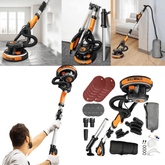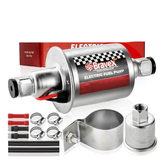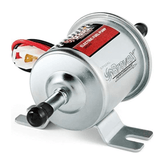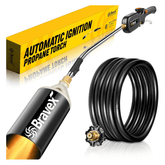Hand Sanding vs Power Sanding Drywall: How to Choose the Drywall Sanding Tool
Are you still contemplating whether to invest in a power sanding tool for your drywall? Curious about the differences between hand sanding and power sanding? Look no further! In this engaging article, we unravel the pros and cons of each method, guiding you toward the optimal choice for achieving flawless drywall finishes. Get yourself all set to make a smart decision that’s gonna take your sanding skills to the next level!

Hand Sanding Drywall
Hand sanding involves using manual tools such as sanding blocks, sanding sponges, or sandpaper sheets to smooth the surface of drywall. Doing this task is no joke - it's a lot of hard work that demands both patience and skill. The sanding tools are typically held by hand, allowing for precise control over the pressure and movement during the sanding process.
Pros of Hand Sanding
Control and Precision
One of the primary benefits of hand sanding is the level of control it offers. By directly manipulating the sandpaper, you can focus on particular areas that need extra care. This method is particularly useful when dealing with corners, edges, or irregular surfaces.
Suitable for Small Areas
Hand sanding is ideal for small-scale projects or localized repairs. It allows you to target specific spots without affecting the surrounding areas. If you are working on a small room or a patching job, hand sanding can be a practical choice.
Portability and Accessibility
Hand sanding requires minimal equipment and is highly portable. You can easily move around the workspace, reaching tight spaces and corners. Additionally, it doesn't rely on electricity, making it accessible even in areas without power sources.
Cons of Hand Sanding
Time-consuming
Hand sanding can be a time-consuming process, especially when working on larger surfaces. Since it relies on manual effort, it may take longer to achieve a uniformly smooth finish compared to power sanding.
Labor-intensive
The physical exertion required for hand sanding can be demanding, especially if you have a large project. The repetitive motion of sanding can strain your muscles and lead to fatigue or discomfort.
Inconsistent Results
Hand sanding heavily relies on the skills and techniques of the individual performing the task. Without proper expertise, it is challenging to achieve consistent results throughout the entire surface. The finish may vary in terms of smoothness and texture, which can be noticeable after painting.
Power Sanding Drywall
Power sanding involves using electric sanders to smooth the surface of drywall. These power tools utilize rotating sanding discs or belts, providing a faster and more efficient sanding process compared to hand sanding. They are designed to cover larger areas quickly and can be adjusted for variable speeds and different sanding grits.
One notable option to consider is the Bravex electric drywall sander. This high-quality tool offers exceptional performance, ease of use, and superior results. With its powerful 800W motor, ergonomic design, and dust collection system that absorbs 99% dust, the Bravex electric drywall sander is truly a valuable asset for any drywall project.
Pros of Power Sanding
Efficiency and Speed
Power sanding is significantly faster and more efficient than hand sanding. The motorized sanders can cover larger areas quickly, reducing overall project time. This makes power sanding a preferred method for extensive projects or professional contractors who prioritize productivity.
Consistent Results
Unlike the manual sanding method, power sanding guarantees consistent results across the entire surface. The machine's steady motion and uniform pressure deliver an even finish, minimizing variations in texture or smoothness.
Versatility for Different Surfaces
Power sanders come in various types and sizes, allowing you to tackle different surfaces with ease. Whether it's a flat wall, textured ceiling, or curved corner, power sanding tools can adapt to the specific requirements of the project.
Cons of Power Sanding
Initial Cost and Maintenance
Power sanding equipment can be expensive compared to traditional hand sanding tools. Additionally, these machines require regular maintenance to ensure optimal performance and longevity.
Learning Curve
Using power sanding tools effectively requires some practice and familiarity. Beginners may initially struggle to achieve the desired results, as improper technique or excessive pressure can damage the drywall surface.
Hand Sanding vs Power Sanding Drywall: Choosing the Right Method
Deciding between hand sanding and power sanding depends on several factors. Consider the following aspects when choosing the most suitable method for your drywall project:
- Project Size and Scope: For small-scale or localized repairs, hand sanding is often sufficient. However, for larger surfaces or extensive renovations, power sanding offers more efficiency.
- Time Constraints: If you have limited time to complete the project, power sanding is the more efficient option. It allows you to achieve a polished surface in a shorter time compared to manual sanding.
- Skill and Experience: Hand sanding requires manual dexterity and patience. If you have confidence in your sanding skills, hand sanding can provide the desired control. Power sanding may be more suitable for experienced users or those willing to invest time in learning the proper technique.
- Surface Condition: The condition of the drywall surface can influence your choice of sanding method. If there are significant imperfections or uneven areas, power sanding can quickly level the surface. However, for minor touch-ups or finishing touches, hand sanding can be more precise.
- Dust Control and Cleanup: Hand sanding could generates a significant amount of dust, requiring thorough cleanup. However, most of the power sanding tools are equipped with dust collection systems, which minimizes dust production and greatly simplifies cleanup.
- Cost Considerations: Power sanders are more expensive than the manual tools used for hand sanding. If you don't already own an electric drywall sander, the cost of purchasing or renting one should be factored into your decision-making process. For smaller or occasional projects, hand sanding may be a more cost-effective option.
Conclusion
In conclusion, both hand sanding and power sanding have their merits and drawbacks when it comes to drywall sanding. Hand sanding tools offer precision and control, making them ideal for intricate areas, while power sanding machines provide speed and efficiency for larger projects. Your choice should be based on project requirements, time constraints, personal preferences, dust management, and budget considerations. By comprehending the advantages and disadvantages of each approach, you can make a knowledgeable decision that will result in a successful drywall sanding and finishing process.








Leave a comment
Please note, comments need to be approved before they are published.